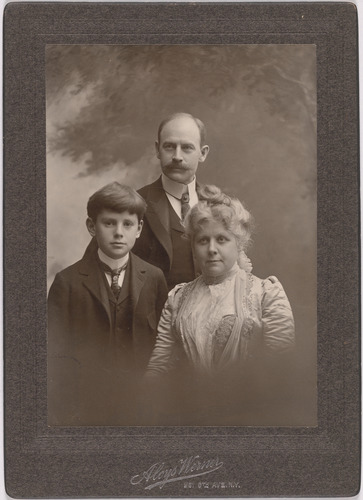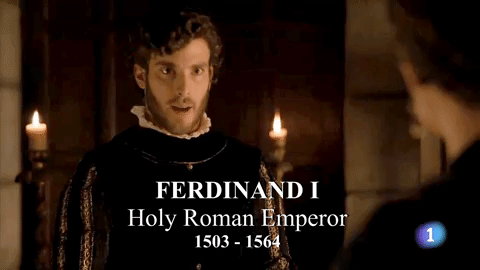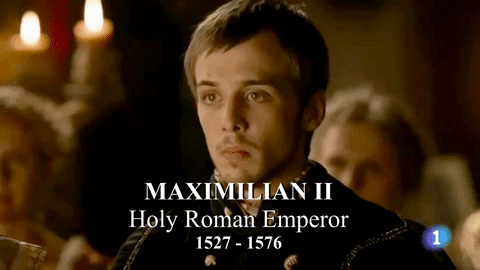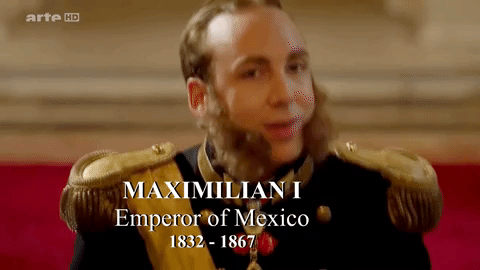#werner x frederick
Text
My toxic trait is that once my mind decides that certain character is a bottom that's the point of no return I won't be able to ever see him as a top.
#snowjanus#cherik#sonny x tom#werner x frederick#spirk#stonathan#perciver#skysolo#lokius#loki laufeyson#luke skywalker#sejanus plinth#tom hagen#percy weasley#jonathan byers#loki season 2
906 notes
·
View notes
Photo

Frederick S. Dellenbaugh, Aloys Werner, c. 1908, Smithsonian: National Portrait Gallery
Size: Image/Sheet: 14.1 x 9.9 cm (5 9/16 x 3 7/8")
Medium: Matte collodian print
https://npg.si.edu/object/npg_S_NPG.2007.55
2 notes
·
View notes
Text
¿Por qué es importante estudiar la historia de la medicina?
En esta profesión, la tarea constante es renovar nuestra ciencia y conocimientos sobre ella. Rechazamos las viejas teorías y creencias como si fueran el diario de ayer, para recibir con entusiasmo los nuevos descubrimientos que se generan en los laboratorios y hospitales. Entonces, ¿por qué debemos estudiar la historia de la medicina cuando estamos apremiados por abandonar el pasado como si fuera inadecuado, impreciso e inválido? ¿Hay realmente tiempo y energía para investigar lo rechazado o inefectivo, cuando hay tanto que aprender?
Ronald C. Merrell ofreció 5 razones para estimular a sus estudiantes a utilizar algo de su tiempo para indagar en la historia médica:
1.
La primera se fundamenta en que el conocimiento del pasado y el aprendizaje de las lecciones de la historia ayudan a no repetir los mismos errores.
2.
La segunda radica en que todos tenemos necesidad de encontrar héroes y fuentes de inspiración en los que apoyar nuestra lucha contra la enfermedad y el sufrimiento. Estos hombres y mujeres heredaron de sus predecesores herramientas, creencias y actitudes, y a partir de ellas, lograron hacer magníficas contribuciones personales para el progreso de la medicina.
3.
La tercera estipula que es importante predecir los cambios y rumbos que seguirá la ciencia. Al conectar nuestro pasado con el presente, es posible proyectar, de alguna manera, una línea hacia el futuro, ya que, como establece la geometría, son necesarios 2 puntos para definir una línea, y uno de esos puntos es el pasado.
4.
La cuarta se basa en que el estudio de la historia es una lección de humildad. Nuestros predecesores creyeron que estaban haciendo lo mejor, pero nosotros sabemos que nadaron en un océano de errores y prejuicios, y que trabajaron con herramientas limitadas (para nuestros ojos de hoy). En el curso de la carrera médica, en un tiempo de rápida expansión del saber, es inevitable que las prácticas que aprendemos en la facultad y que se han utilizado durante muchos años sean cambiadas y descartadas. Muchos conceptos que incorporamos con dificultad, pronto se probarán erróneos, deberemos asimilar los nuevos y, en ese camino, será inevitable recordar a los pacientes que fueron mal atendidos por nuestro conocimiento defectuoso. Aun así, debemos seguir haciendo con humildad y compromiso lo mejor que podamos con lo mejor que tenemos.
5.
Finalmente, la quinta razón plantea que el estudio de la historia afirma los principios fundamentales de la medicina, esos que no cambian, a pesar de los avances científicos, tecnológicos o sociopolíticos. Nuestra profesión tiene una base inmutable en la asistencia, la preocupación por los demás y la curiosidad. Estos pilares son los que han sostenido el progreso y han permitido perdonar nuestras fallas y guiar nuestros objetivos al servicio de la humanidad.
Si bien muchos otros autores han probado con creces la importancia de la historia con distintos argumentos y desde diversas perspectivas, estos 5 motivos son un buen resumen que estimula a mirar el pasado con inquietud y admiración hacia nuestros antecesores. A continuación se justifica y profundiza en cada una de las razones:
1.
Primero, ¿es cierto que aquellos que no aprenden las lecciones del pasado están condenados a repetir sus errores? En verdad, hay muchos momentos históricos que necesitamos descartar. Por ejemplo, las fallidas teorías del flogisto, las miasmas, los 5 humores y las supersticiones de muchas culturas han sido abandonadas, así como también deberemos dejar ir todas las teorías carentes de base científica (o no probadas por la razón) que aparezcan. ¿Existe realmente este peligro? Por supuesto que sí. Consideremos los enfoques anticientíficos de muchas medicinas alternativas, falsos curadores, charlatanes, etc. No podemos ir en esa dirección de nuevo.
2.
Segundo, ¿podemos encontrar héroes? Yo puedo: Andrés Vesalio enfrentándose a Galeno; William Morton venciendo el dolor con la anestesia; Theodor Billroth abriendo el abdomen para la cirugía; Ignaz Semmelweis convenciendo a sus colegas de que se lavaran las manos; William Gorgas en la selva descubriendo los métodos para erradicar el paludismo y la fiebre amarilla; Werner Forsmann realizando el primer cateterismo y la primera angiografía en su propio cuerpo; Frederick Banting descubriendo la insulina con un pequeño presupuesto y siendo un cirujano ortopédico; René Favaloro desde un laboratorio de la Clínica Cleveland probando que un corazón viejo puede ser renovado si se lo revasculariza. Todos ellos son héroes para mí, y son solo unos pocos elegidos al azar.
3.
Tercero, ¿podemos usar la historia para predecir el futuro? De alguna forma, es posible. El conocimiento de la anatomía humana anunció el éxito de la cirugía. La anestesia invitó a la aventura quirúrgica. La bacteriología clamó por antibióticos. Los rayos X incitaron la curiosidad por el interior del cuerpo, ayudando a crear las demás imágenes médicas. ¿Qué hallazgos recientes pronostican nuevos desarrollos para la medicina? Solo por dar pocos ejemplos, el desciframiento del genoma humano puede incentivar a miles de investigadores para que utilicen su conocimiento para entender muchas enfermedades; las imágenes moleculares abren líneas de investigación hacia la medicina personalizada; y la nanotecnología significa que la cirugía mínimamente invasiva puede alcanzar niveles moleculares.
4.
Cuarto, ¿hemos aprendido cosas que nos hagan humildes? Nuestros antecesores médicos vieron, inermes, morir a la mitad de los niños antes de los 5 años, a pesar de que fueron grandes eruditos para su época. Hace 50 años, no existían las salas de terapia intensiva ni el bypass coronario. Tampoco se contaba con ecografías, tomografías computadas o resonancias magnéticas. Había alrededor de 4 antibióticos, la viruela no estaba erradicada y la quimioterapia se encontraba en pañales. Sin embargo, los médicos de la década de los sesenta estaban convencidos de estar a la vanguardia de la medicina. Y tenían razón, lo estaban. Ahora bien, si ellos viesen la ciencia en su estado actual, serían humildes al constatar que aquello que calificaban como lo mejor era pobre. Nosotros mismos hemos abandonado y desacreditado lo antiguo, aunque hayamos sentido orgullo por haber sido protagonistas de la introducción de esos procedimientos cuando fueron novedad. Hemos aceptado lo nuevo, no porque era reciente, sino porque el estudio de cada innovación convenció a nuestra mente científica de que era verdad y de que nuestros pacientes podían beneficiarse con ella.
5.
Finalmente, ¿hemos encontrado algo invariable en medicina? Por supuesto que sí. Desde los primitivos curadores, los médicos siempre hemos estado ahí para cuidar. Aunque no podamos sanar, nuestra promesa al paciente es servirle incansablemente, ser curiosos y emprendedores en la búsqueda de nuevas formas de ayuda y nunca abandonarlo. Estos compromisos definirán por siempre nuestra profesión, y por ello estudiamos su historia.
4 notes
·
View notes
Photo

Crown Prince Frederick Wilhelm contemplating the corpse of French general Abel Douay - Anton von Werner, 1888 [3000 x 2102] posted by Reddit User: Aboveground_Plush Visit artofreddit.com for more art #battlepaintings
1 note
·
View note
Photo










The House of Habsburg
The House of Habsburg was one of the most influential royal houses of Europe. At the height of its power, the dynasty ruled Austria, a vast tract of Central Europe, Spain, Sardinia, Sicily, Naples, the Low Countries, territories in Central-South America, and it occupied the throne of the Holy Roman Empire for nearly three centuries. Frederick III was the first emperor of the dynasty and Empress Maria Theresa was the only female ruler of the Habsburg dominions, but other women of this dynasty also stood out as regents of their adoptive countries or governors of the Netherlands.
The earliest traceable ancestor of the Habsburg dynasty was a Count Guntram “the Rich”, whose name first appears in records dating from the year 952. The family name is derived from that of their original castle, the Habichtsburg (Hawk’s Castle), built in 1020 by Werner, bishop of Strasbourg, and his brother-in-law, Count Radbot, in what is now the Aargau Canton of northern Switzerland. The first member of the family to bear the name was Count Werner I.
The Habsburgs held the arts in high regard. In the sixteenth century, the power and wealth of a dynasty were expressed through its patronage of art and science. Bella gerant alii, tu felix Austria nube – ‘Let others wage war: you, happy Austria, marry’. This famous saying is invariably quoted when the rise of the Habsburgs is put down to the success of their dynastic marriage policy, in which young archdukes and archduchesses were frequently married off as children to members of other dynasties, or indeed to relatives of their own. The Holy Roman Emperor Maximilian I is credited with the greatest success in the implementation of this policy, but the wars were an equally important element of Habsburg policy as marriages.
Charles V was Lord of an empire in which "the sun never sets". King Charles II was the last Habsburg ruler of Spain. Franz Joseph I was the longest-reigning Emperor of Austria and King of Hungary. His brother Maximilian was the only monarch of the Second Mexican Empire and he was executed by the Mexican government. The assassination of his nephew and heir Archduke Franz Ferdinand in Sarajevo led directly to the First World War. His grandnephew Charles I of Austria was the last ruler of the Austro-Hungarian Empire.
(x)(x)(x)
148 notes
·
View notes
Text
May 07 in Music History
1667 Death of German composer Johann Jacob Froberger in Hericourt.
1704 Birth of German composer Carl Heinrich Graun in Saxony.
1744 Birth of composer Joseph Beer in Bohemia.
1746 Birth of German violinist and composer Karl Stamitz in Mannheim.
1747 J.S. Bach meets with King Frederick II of Prussia in Potsdam.
1769 Birth of composer Giuseppe Farinelli.
1793 Death of Italian composer Pietro Nardini in Florence.
1800 Death of Italian composer Nicoló Piccini in Passy, suburban Paris.
1818 Death of Bohemian composer Leopold Kozeluch in Vienna.
1824 FP of Beethoven's Choral Symphony No 9, at the Kärntnertor Theater in Vienna. Beethoven kept time but the musicians followed the assistant conductor, Michael Umlauf.
1825 Death of Italian composer Antonio Salieri in Vienna, at age 74.
1829 Death of Italian composer Mauro Giuliani.
1833 Birth of German composer Johannes Brahms in Hamburg.
1836 Death of German composer Norbert Burgmüller in Aachen.
1840 Birth of Russian composer Pyotr Tchaikovsky.
1850 Birth of Hungarian conductor Anton Seidl in Budapest.
1861 Birth of Hindu poet and composer Rabindranath Tagore.
1873 Birth of American composer Clarence Dickenson.
1883 Opening of The Royal College of Music in London.
1883 Birth of composer Gino Roncaglia.
1888 FP of Lalo's opera Le Roi d'Ys in Paris.
1890 FP of Godard's "Dante et Béatrice" Paris.
1901 Birth of Belgian composer Marcel Poot in Vilvorde.
1907 Birth of composer Jef van Durme.
1908 Birth of Dutch composer Wouter Paap in Utrecht.
1910 Birth of German composer Heinrich Konietzny in Gliawitz.
1910 Birth of pianist Edward Kilenyi.
1913 Birth of clarinetist David Glazer.
1915 Sinking of the Lusitania taking the life of Irish composer O'Brien Butler Whitehall.
1918 Birth of composer Argeliers Leon.
1919 Birth of English violinist Emanuel Hurwitz.
1926 FP of Darius Milhaud's opera Les malheurs d'Orphée at the Théatre de la Monnaie in Brussels.
1927 Birth of Swedish soprano Elisabeth Soderstrom in Stockholm.
1931 Birth of Swedish baritone Ingvar Wixell in Lulea.
1931 Birth of Swedish tenor Helge Brilioth in Vaxjo.
1936 Birth of English composer Cornelius Cardew in Winchcombe.
1942 Death of Austrian conductor Felix Weingartner in Winterthur, Switzerland.
1944 FP of revised version of Aaron Copland's Our Town film score suite. Boston Pops conducted by Leonard Bernstein.
1945 Birth of composer Ann Gebuhr.
1945 FP of Fran Martin´s In Terra Pax, an oratorio, on radio broadcast celebrating the end of WWII, in Geneva.
1947 FP of Virgil Thomson's opera The Mother of Us All in NYC.
1949 FP of Hans Werner Henze's opera Das Wundertheater in Heidelberg, Germany
1950 Birth of English composer Philip Lane.
1954 Birth of American composer Frank Halferty.
1958 American pianist Van Cliburn signs contract with RCA Victor records.
1961 Birth of American conductor Robert Spano.
1963 Birth of American composer Mike Christianson.
1964 Birth of Scottish composer Kevin Mayo in Stirling.
1970 Death of English composer John Raynor in Sussex.
1981 Death of American composer Peggy Stuart Cooledge in Cushing, ME.
1985 FP of David Ward-Steinman's Chroma Concerto for multiple keyboards, percussion, and chamber orchestra. Noveau West Chamber Orchestra conducted by Terry Williams, with the composer and Amy-Smith-Davie, soloists, in Scottsdale, AZ.
1988 FP of Karheinz Stockhausen's opera Montag von Licht 'Monday from Light' at the Teatro alla Scala in Milan.
1988 FP of Michael Torke's ballet Black and White. NY City Ballet Orchestra, David Alan Miller conducting, at the New York State Theater.
1993 FP of Harrison Birtwistle's Five Distances for Five Instruments at the Purcell Room, by the Ensemble InterContemporain, in London.
1998 FP of Joan Tower's Tambor. Pittsburgh Symphony, Mariss Jansons conducting.
1999 FP of Robert X. Rodriguez' Bachanale concertino for Orchestra. San Antonio Symphony, Christopher Wilkins conducting.
2002 Death of Catalan composer Xavier Montsalvatge.
2002 Death of British contralto Monica Sinclair in London.
2005 FP of Richard Danielpour and Nobel Prize-winning novelist Toni Morrison's Margaret Garner at Detroit Opera House
38 notes
·
View notes
Text
諾貝爾獎十大最年輕得主:獲獎者保持頭銜最長99年
讓我們來看看諾貝爾獎歷史上最年輕的10位得主(以下是以獲獎者獲獎時的年齡進行排名):
1、馬拉拉·尤薩夫扎伊(Malala Yousafzai),17歲
馬拉拉伊是當前世界上最年輕的諾貝爾獎主,2014年,年僅17歲的她獲得了諾貝爾和平獎,她出生在巴基斯坦斯瓦特地區,因為強烈反對壓製女童而被塔利班分子槍擊頭部,傷癒後她繼續為兒童教育權利而奮鬥,目前生活在英國。
2、勞倫斯·布拉格(Lawrence Bragg),25歲
布拉格保持最年輕諾貝爾獎得主頭銜長達99年,之後馬拉拉·尤薩夫扎伊(Malala Yousafzai)刷新了他的紀錄,他於1915年贏得了諾貝爾物理學獎,他出生於澳大利亞,畢業於英國曼徹斯特市維多利亞大學。他因利用X射線分析晶體結構而獲得諾貝爾獎,他還創建了X射線波長、入射角、晶體內原子層之間距離之間有關聯性,他的最新發現使計算透明分子中原子位置成為可能。
3、納迪亞·穆拉德(Nadia Murad),25歲
納迪亞出生於1993年,她是一名伊拉克雅茲迪族人權活動家,生活在德國。 2014年,恐怖組織綁架並囚禁她3個月時間,最終她成功逃離。 2018年,納迪亞因致力於結束“將性暴力作為戰爭和武裝衝突的武器”而獲得諾貝爾和平獎。
4、維爾納·海森堡(Werner Heisenberg),31歲
1932年,德國科學家維爾納·海森堡獲得了諾貝爾物理學獎,一年後,1933年,他再次獲得諾貝爾物理學獎,他提出的不確定性原理對如何精確確定粒子速度和位置設定了限制,他還建立了一種基於測量的量子力學,從而發現了氫的同素異形體。海森堡還對宇宙射線和鐵磁性理論做出了重大貢獻。
5、保羅·迪拉克(Paul A.M. Dirac),31歲
1933年,年僅31歲的迪拉克獲得了諾貝爾物理學獎,同年他與埃爾溫·薛定諤(Erwin Schrodinger)分享了這一獎項,因為他發現了新的原子理論產生形式,他被人們認為是量子力學和量子電動力學的先驅之一。
6、卡爾·大衛·安德森(Carl D. Anderson),31歲
1932年,年僅27歲的安德森發現了正電子,4年後,他因這項發現獲得了諾貝爾物理學獎,成為世界上最年輕的諾貝爾獎得主之一。值得關注的是,安德森在1936年發現了μ介子,他在美國加州理工學院工作,他的學術研究生涯主要在這裡度過。
7、李政道(Tsung-Dao Lee),31歲
李政道的博士導師是著名的物理大師恩里克·費米(Enrico Fermi),費米於1938年獲得獎貝爾獎。 1957年,31歲的李政道因其與楊振寧合作提出“弱相互作用中宇稱不守恆理論”,獲得了諾貝爾物理學獎,他的研究導致了關於基本粒子的創新發現。
8、魯道夫·穆斯堡爾(Rudolf Mossbauer),32歲
穆斯堡爾發現穆斯堡爾效應的過程非常有趣,當時是由於他忽視了專家關於實驗設備的建議。 1961年,32歲的他因“關於伽馬伽射的共振吸收研究”和穆斯堡爾效應被授予諾貝爾物理學獎,科學家基於他的發現能夠更好地研究原子核能量,以及如何受到周圍環境和其他現象的影響。
9、弗雷德里克·班廷(Frederick G. Banting),32歲
班廷是一位加拿大醫生,1923年年僅32歲時獲得了諾貝爾生理醫學獎,他在狗胰腺提取物中發現了胰島素,他還給一隻患糖尿症的狗注射了胰島素,治療之後發現該療法可使動物血糖指數降至正常水平,同時,他是使用胰島素治療糖尿病的第一人。
10、梅里德·科里根(Mairead Corrigan),32歲
1944年1月27日,梅里德出生於北愛爾蘭的貝爾法斯特,1976年,年邁32歲的她獲得了諾貝爾和平獎,此外她還獲得其他一些獎項,她是北愛爾蘭和平運動的創始人,該運動後來改名為“和平人民社區”,該組織致力於結束北愛爾蘭天主教徒和基督教徒之間的殘酷衝突。
.(tagsToTranslate)Top10 十大(t)諾貝爾獎十大最年輕得主:獲獎者保持頭銜最長99年(t)kknews.xyz
from 諾貝爾獎十大最年輕得主:獲獎者保持頭銜最長99年
via KKNEWS
0 notes
Text
10 người nhận giải Nobel trẻ tuổi nhất trong lịch sử
10. Tawakkol Karman
Tawakkol Karman là một nhà báo, một chính trị gia đã giành giải Nobel Hòa bình năm 2011, khi cô 32 tuổi. Cô đã giành giải Nobel "cho cuộc đấu tranh bất bạo động vì sự an toàn của phụ nữ và quyền của phụ nữ để tham gia vào công tác xây dựng hòa bình ".
Tawakkol Karman là phụ nữ người Ả Rập đầu tiên giành được giải thưởng danh giá này, đồng thời là người sáng lập của nhóm Phóng viên nữ không bị ràng buộc năm 2005.
9. Mairead Corrigan
Mairead Corrigan giành giải Nobel Hòa bình năm 1976, ở tuổi 32. Bà là người đồng sáng lập "Cộng đồng người hòa bình", một tổ chức nhằm cổ vũ giải pháp hòa bình cho cuộc Xung đột vũ trang tại Bắc Ireland.
Ngoài giải Nobel Hòa bình nói trên, Corrigan cũng đã được trao nhiều giải thưởng khác: Nobel Hòa bình của nhân dân Na Uy, huy chương Carl von Ossietzky,…
8. Frederick G. Banting
Nhà khoa học người Canada giành giải Nobel về Y học – Sinh lý học năm 1923 khi 32 tuổi với công trình khám phá ra hormone tuyến tụy insulin trong điều trị bệnh tiểu đường.
Tính đến nay, ông vẫn là người trẻ nhất nhận giải Nobel Y học – Sinh lý học. Năm 2004, ông được bình chọn ở vị trí thứ 4 trong bảng xếp hạng người Canada vĩ đại nhất.
7. Rudolf Mößbauer
Nhà vật lý người Đức nhận giải Nobel Vật lý năm 1961 ở độ tuổi 32, cho công trình phát hiện Hiệu ứng mang tên mình, khi nghiên cứu trong Viện nghiên cứu Y học Max Planck ở Heidelberg.
Ông còn nhận được Huân chương Elliott Cresson và Huy chương vàng Lomonosov trong sự nghiệp nghiên cứu của mình.
6. Lý Chính Đạo (Tsung-Dao Lee)
Nhà vật lý người Mỹ gốc Hoa đã giành giải Nobel Vật lý năm 1957 khi mới 31 tuổi. Nghiên cứu của ông đã chỉ ra rằng, các tương tác vật lý có thể không tuân theo đối xứng gương.
Cùng năm đó, ông còn giành được giải thưởng Albert Einstein, trở thành một thành viên của Viện Hàn lâm khoa học Quốc gia Hoa Kỳ,…
5. Carl D. Anderson
Nhà vật lý người Mỹ giành giải Nobel Vật lý khi mới 31 tuổi. Ông giành giải thưởng cao quý này nhờ việc khám phá ra positron. Ông cũng có những đóng góp đáng kể trong việc phát hiện ra các muon, một hạt hạ nguyên tử nặng và chắc hơn electron 207 lần.
4. Paul AM Dirac
Paul AM Dirac giành giải Nobel Vật lý năm 1933 cho việc phát hiện ra các hình thức sản xuất mới của lý thuyết nguyên tử. Những phát minh của ông có tầm ảnh hưởng rất quan trọng đối với lĩnh vực cơ học lượng tử và điện động lực học lượng tử.
Trong cuộc đời mình, ông từng là Giáo sư của nhiều trường như Đại học Cambridge, Đại học Miami và Đại học bang Florida.
3. Werner Heisenberg
Nhà khoa học người Đức đã giành giải Nobel Vật lý năm 31 tuổi khi sáng lập ra thuyết cơ học lượng tử. Ông cũng có những đóng góp quan trọng đối với lý thuyết về động lực học của dòng chảy hỗn loạn, các hạt nhân nguyên tử, sắt từ, các tia vũ trụ, và các hạt hạ nguyên tử.
Ông được trao bằng Tiến sỹ danh dự của các trường Đại học Bruxelles, Đại học Công nghệ Karlsruhe, và Đại học Budapest.
2. Lawrence Bragg
Lawrence Bragg là người nhận giải Nobel vật lý trẻ nhất trong lịch sử, khi mới 25 tuổi với phát minh chế tạo ra dụng cụ phân tích cấu trúc tinh thể bằng tia X.
Trong sự nghiệp nghiên cứu của mình, ông đã giành được rất nhiều giải thưởng danh giá khác: huân chương Matteucci, huy chương Copley, huy chương Royal,…
1. Malala Yousafzai
Malala Yousafzai nhận giải Nobel Hòa bình năm 17 tuổi và trở thành người trẻ tuổi nhất nhận được giải thưởng danh giá này. Cô đã đứng đầu cuộc đấu tranh chống lại sự đàn áp thanh thiếu niên của chính quyền Taliban và đòi quyền được đi học cho trẻ em toàn thế giới.
Malala Yousafzai được bình chọn là 1 trong 100 người có ảnh hưởng nhất thế giới năm 2013. Cô đã trở thành biểu tượng, nguồn cảm hứng cho hàng triệu phụ nữ ở các nước thế giới thứ ba.
Nguồn http://ift.tt/2nbxY7Q
0 notes
Text












White haired ambitious boy x head on the clouds, rich, depressed boy–
60 notes
·
View notes
Photo

Frederick S. Dellenbaugh, Aloys Werner, c. 1908, Smithsonian: National Portrait Gallery
Size: Image/Sheet: 14.1 x 9.9 cm (5 9/16 x 3 7/8")
Medium: Matte collodian print
http://npg.si.edu/object/npg_S_NPG.2007.55
2 notes
·
View notes
Photo

Frederick S. Dellenbaugh, Aloys Werner, c. 1908, Smithsonian: National Portrait Gallery
Size: Image/Sheet: 14.1 x 9.9 cm (5 9/16 x 3 7/8")
Medium: Matte collodian print
https://npg.si.edu/object/npg_S_NPG.2007.55
0 notes